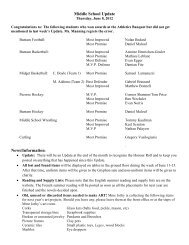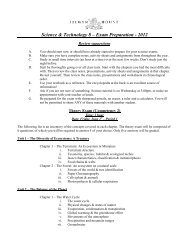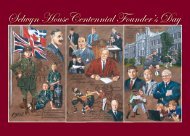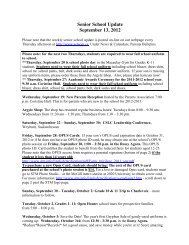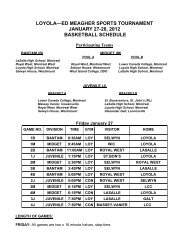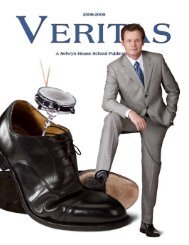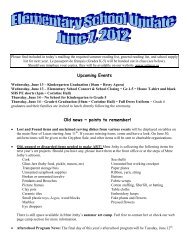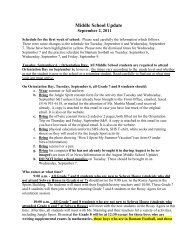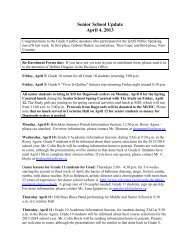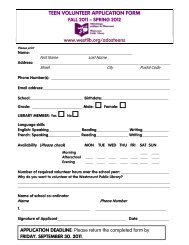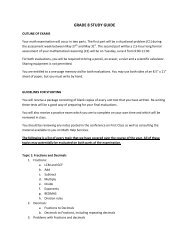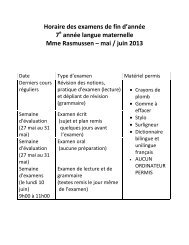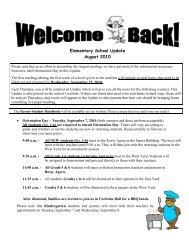In stating theme from out of such opposed sets of values, the student need merely say that theauthor values one over the other and then give the reasons.TitleAnother important method for developing theme is the title. The student should find out whetherthe title alludes to some other work or passage; and if it does so, he should first set down the fullcontext of the allusion and then suggest how it relates to theme. The best way to check forallusions is to look up the key words in the index of The Oxford Book of Quotations (or a similarreference book). The likeliest sources are the King James Bible and Shakespeare’s plays. If thetitle is a person’s name or the name of a place, the theme makes some statement that explains theauthor’s fascination with a character or a setting. Discussion of the significance of the title is oneof the best ways to end an essay on theme because the writer hopes that we will remember histitle after all else is forgotten; and consequently, his title functions as a shell into which he putsthe “nut” of his message.ActionSince action is the working through of conflict, a writer will likely have a thematic messageimplicit at every important moment of the plot, but above all, he will show by the resolution ofthe conflict which side of the conflict he sides with or wishes us to side with.STYLEAn author’s style is his personal manner of writing. Included as elements of style are generalfeatures such as diction (choice of words from all levels of usage: slang, dialect, colloquialspeech, or formal <strong>English</strong>), syntax (word order and grammatical structure), and imagery (simile,metaphor, symbol, personification, metonymy, imagistic motifs, mythological patterns,archetypes, hyperbole, oxymoron, antithesis, irony, apostrophe); dialogue; point of view; andtone.General FeaturesFirst briefly characterize the author’s style as prosaic, poetic, aphoristic, journalistic, visual,realistic, cinematic, or the like; and second, explain in extended form, through severalparagraphs, what features justify this description. Quotation must occupy the central place inyour presentation of evidence: you must quote a passage of some length, setting it into themiddle of a paragraph, and write several sentences that point out in this passage the features thatcontribute to the effect named as the primary one. Descriptive passages are very apt for thispurpose, especially those that open chapters in novels.It is perhaps easiest to speak of the author’s style as prosaic or poetic. A prosaic style aimsprimarily to convey information; to do so as efficiently as possible, it uses simple diction, normalsyntax, realistic dialogue, and straight-line narration (cause leads to effect; effect becomes causefor further effect, and so forth). A poetic style calls attention to itself as much as to theinformation it conveys. It asks to be admired for its grace, fullness, and imaginativeexpressiveness. It therefore employs unusual or poetic diction, syntactical inversions, images,33
symbols, poetic description, allusions, and rhetorical devices (puns, balanced sentences,aphorisms, epigrams, oxymorons, paradoxes, and so forth).DialogueIn modern novels, the tendency is to convey much of the important action through dialogue; butin novels from all ages, both dialogue and narration convey action. The task of this section isfirst to estimate the importance of the dialogue by stating how much action the author conveys indialogue and how much by narration and second to justify describing the dialogue as mechanical(merely “cranked” out to fill up space rather than to match reality) if it carries little of the action,or as realistic if it carries much of the action. The development of the section must includequotation; it is best to quote one whole exchange of, say, ten to twelve lines.ToneClosely related to point of view is the writer’s predominant mood or attitude toward his subject,the audience, or himself, which we call the tone of the book. The writer’s tone is often conveyedthrough his narrator and suggest the emotional colouring or emotional meaning of a work. As aconclusion to his essay on style, the student should attempt to identify the tone and to suggestwhat general effect the tone exerts over the average reader. The tone results from the intendedgenre (literary kind—tragedy, romance, elegy, and so forth), and it thus points to the centralpurpose of the work and relates style to theme.POINT OF VIEWThe narrator’s relation to his fictional world and to the minds of his characters we represent byanalogy: the narrator stands at a certain point from which he views events and characters.Because the point of view of the narrator largely determines the reader’s perception of events,the student must first identify the narrator’s point of view and second suggest what effect theadoption of that point of view has on the whole work of fiction. The various possibilities reduceto the four summarized in the following diagram:First Person Limited Omniscient Omniscient Objective(Third Person Limited) (Unlimited) (Dramatic)First PersonThird Person Limited34



